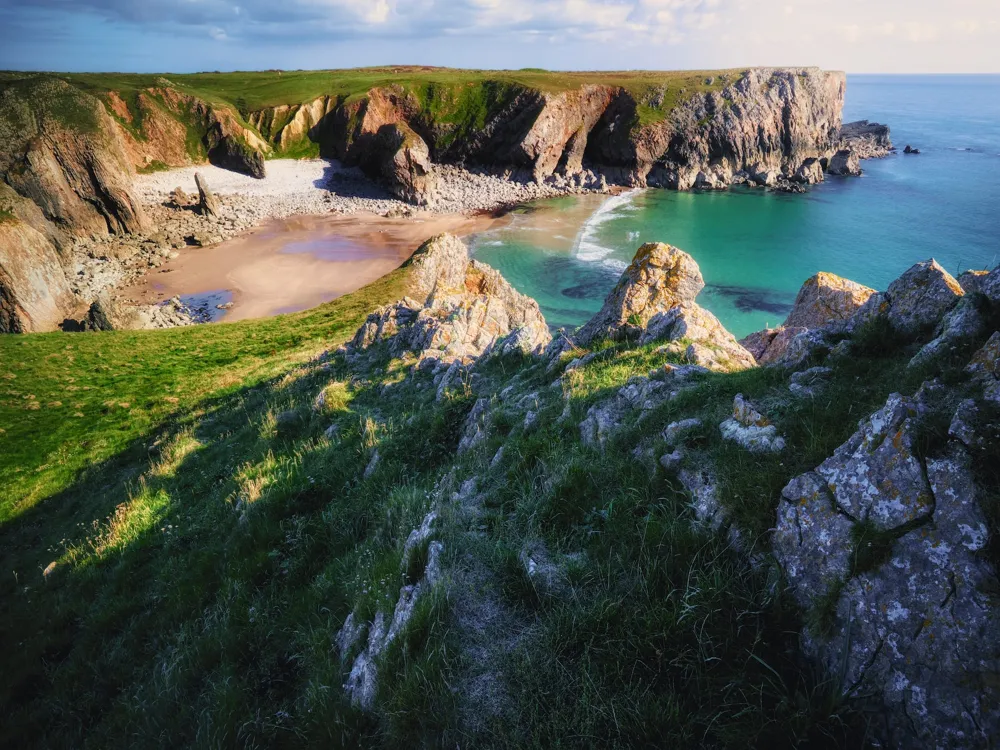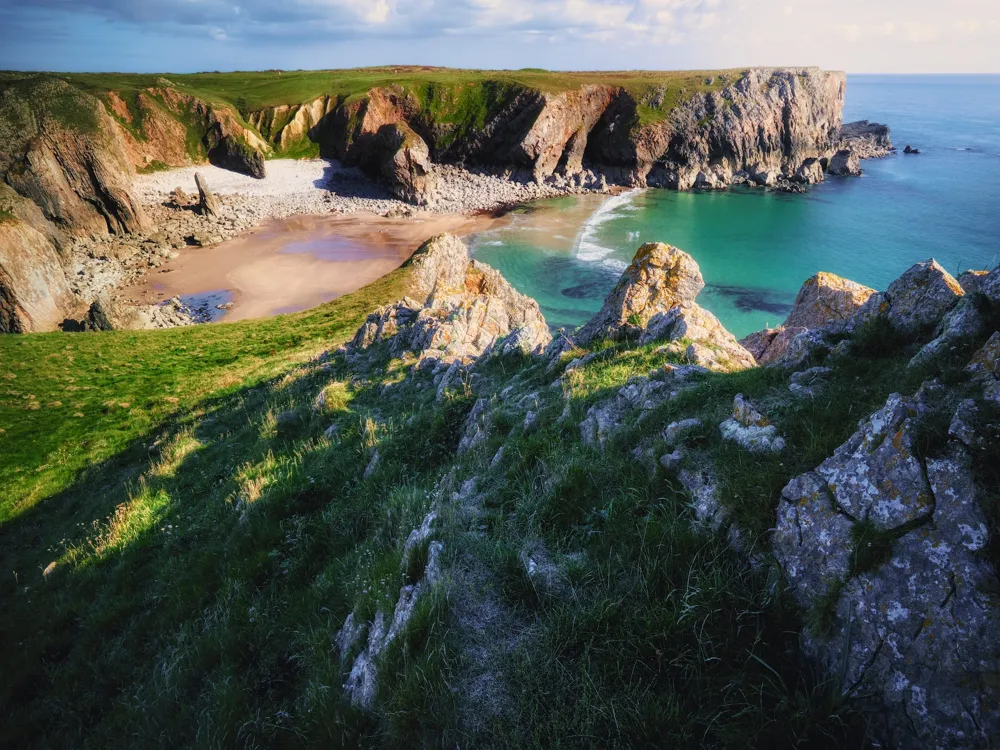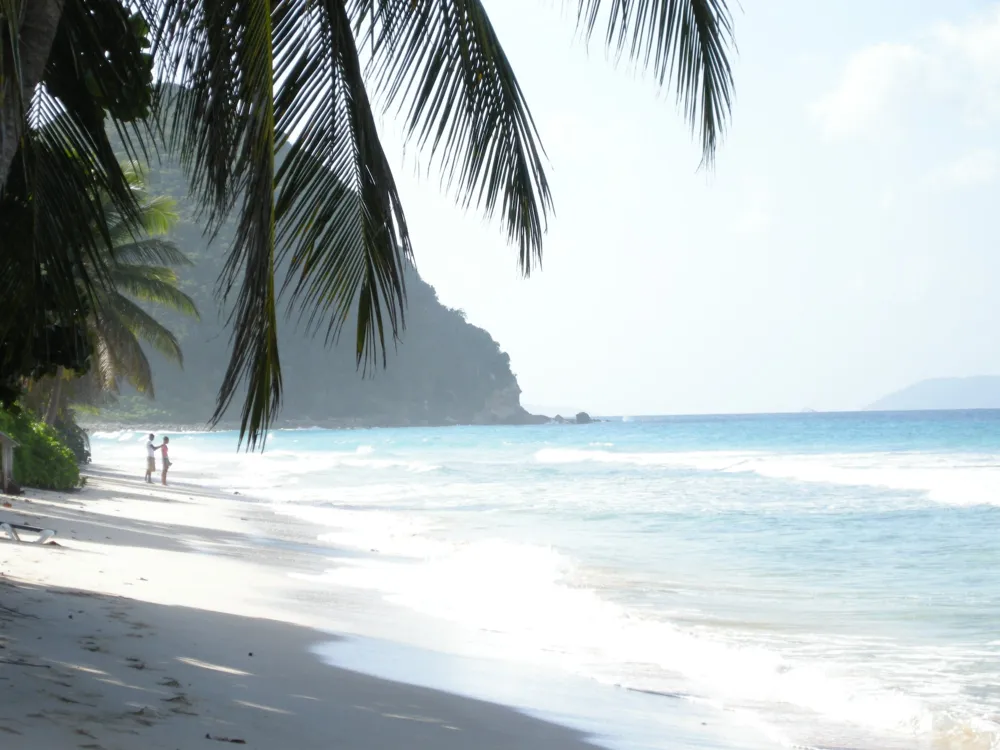Halong Bay, a magnificent natural wonder located in the Quang Ninh Province of Vietnam, is renowned for its scenic ocean karst topography and is often included in lists of natural wonders of the world. With its spectacular seascape of limestone pillars and islets rising dramatically from the Gulf of Tonkin, Halong Bay's beauty is not just visual, but it is also the subject of numerous legends and myths. Covering an area of around 1,553 square kilometers and housing approximately 1,600 islands and islets, most of which are uninhabited and unaffected by human presence, this UNESCO World Heritage Site presents an ethereal, almost surreal landscape that captivates visitors from all over the globe. The name 'Halong' translates to 'Descending Dragon' in Vietnamese, which is derived from a legend about a dragon that descended from the mountains to help the Vietnamese defend their land against invaders. As the dragon spat out jewels and jade, they turned into the islands and islets dotting the bay, forming a natural fortress. These limestone karsts and isles in various shapes and sizes are the result of millions of years of weathering and erosion. The bay also supports various ecosystems, including coral reefs, freshwater swamp forests, and dense mangrove forests, making it a hub of biodiversity. The landscape of Halong Bay is the result of 500 million years of geological evolution. The bay's iconic limestone karsts are a result of centuries of erosion and weathering, shaping these unique formations. Some of the islets and towers rise as high as 100 meters, with hollow caves and grottoes that are often accessible only by boat. The bay's geomorphology is diverse, featuring wave-eroded notches, marine notch caves, arches, and more, forming an almost otherworldly terrain. Halong Bay is not just about its stunning landscapes but also about the rich biodiversity it nurtures. The bay's numerous islands, islets, and the surrounding waters are home to a variety of wildlife species. This includes over 200 species of fish, 450 different kinds of mollusks, and numerous hard and soft corals. The dense mangroves and forests on the islands are home to various species of birds and small animals, including bantams, antelopes, monkeys, and lizards. Beyond its natural beauty, Halong Bay is steeped in history and culture. Archaeological studies have shown that humans have inhabited the area as far back as 18,000 years ago. The bay has been the setting of several historical events and is dotted with ancient cultural sites, including temples, pagodas, and remnants of old civilizations. This rich cultural landscape adds another layer of allure to the already captivating natural scenery. The architecture of Halong Bay is not about human-made structures but rather the natural architecture created by millions of years of geological changes. The bay's most notable features are the limestone karsts and islets, each unique in shape and size, creating a natural architectural wonder. These formations are the result of the slow erosion of calcium carbonate-rich limestone, creating formations that are both majestic and mysterious. The caves and grottoes that pepper these limestone formations add another architectural element to the bay. These caves vary from small, shallow grottoes to large, deep, complex systems. The Sung Sot Cave, or the Surprise Cave, is among the most famous, known for its vast chambers and spectacular stalactites and stalagmites. These natural 'cathedral-like' structures are a testament to the creative force of nature, forming a stark contrast to the human-made architecture found in urban areas. Cave exploration in Halong Bay offers a glimpse into the earth's geological history. The caves, formed by the dissolution of limestone, feature fascinating formations of stalactites and stalagmites. Each cave in the bay has its own unique beauty and character, with some displaying vast open chambers while others feature narrow passageways. The islands and islets of Halong Bay, such as Ti Top Island, Cat Ba Island, and others, also contribute to the bay's natural architecture. Their steep, towering limestone walls and lush vegetation create a stark and beautiful contrast with the emerald waters of the Gulf of Tonkin. Many of these islands have their own myths and legends, adding to the bay's mystique. While largely uninhabited, some islands in Halong Bay have small communities living in floating villages. These settlements, with their houseboats and floating structures, are uniquely adapted to the bay's geography and lifestyle, showing a harmonious blend of human resilience and natural architecture. The traditional fishing villages, like Cua Van and Vung Vieng, are examples of sustainable living in delicate ecological conditions. The best time to visit Halong Bay is from October to April, when the weather is cool and dry, providing the most comfortable conditions for cruising and exploring the bay. When visiting Halong Bay, it's important to pack light, comfortable clothing, swimwear, sun protection, and sturdy shoes for island exploration. Don't forget to bring your camera for capturing the stunning scenery. Selecting the right cruise is crucial for your Halong Bay experience. Research and choose a reputable company that offers good safety records and environmental practices. Consider the duration and itinerary of the cruise to suit your preferences. When visiting Halong Bay, it's important to respect the local culture and environment. Follow guidelines for sustainable tourism, avoid littering, and be mindful of your impact on the natural and cultural sites. Halong Bay is accessible from Hanoi, the capital of Vietnam, and the journey can be made by bus, car, or seaplane. The drive from Hanoi to Halong City takes about 2-3 hours. Alternatively, luxury seaplanes offer a faster and more scenic route, providing an aerial view of the bay.Overview of Halong Bay
Geology and Landscape
Flora and Fauna
Cultural and Historical Significance
Architecture of Halong Bay
Cave Exploration
Island Formations
Human Interaction with the Landscape
Tips When Visiting Halong Bay
Best Time to Visit
Packing Essentials
Choosing a Cruise
Respecting Local Culture and Environment
How To Reach Halong Bay
Hospital Cave
Halong Bay
₹ 15,260 onwards
View halong-bay Packages
Halong-bay Travel Packages
View All Packages For Halong-bay
Top Hotel Collections for Halong-bay

Private Pool

Luxury Hotels

5-Star Hotels

Pet Friendly
Top Hotels Near Halong-bay
Other Top Ranking Places In Halong-bay
View All Places To Visit In halong-bay
View halong-bay Packages
Halong-bay Travel Packages
View All Packages For Halong-bay
Top Hotel Collections for Halong-bay

Private Pool

Luxury Hotels

5-Star Hotels

Pet Friendly






















